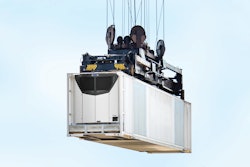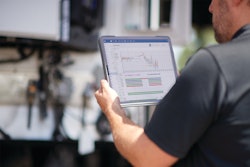
This past July, two things happened: NASA confirmed it was the hottest month on record, going back over 140 years, and roughly 115 million gallons of ice cream were produced and shipped in the United States alone.
The infrastructure required to manufacture, transport, and store such amounts of ice cream — known as “the cold chain”— is itself a major contributor to climate change and rising global temperatures. Ice cream is actually a small percentage of the throughput handled by the cold chain every year. It is estimated that 70% of all food farmed or manufactured passes through the cold supply chain. An unfortunate truth about refrigerated and frozen foods is that not all of it will get eaten. Every year, 12-13% of the global food supply is wasted due to failures in the cold supply chain, rotting or otherwise expiring before it reaches its retail destination.
The cold chain was nearly a $300 billion market in 2022, and it’s expected to soar past $1 trillion in the next 5-6 years, growing at a rate of almost 20% year-over-year. These staggering growth rates can be attributed to a multitude of factors but perhaps most striking would be the COVID-19 pandemic, where more people started buying in bulk and frozen food sales ballooned past $65 billion in the United States just in 2020.
Perhaps this is a good place to raise people’s spirits by breaking for a lecture on thermodynamics. Well, at least the first law in thermodynamics, which says energy cannot be created or destroyed. Put simply, in the scenario of cold logistics, if you have a system pushing large amounts of cooling in one direction - into the warehouse - that system generates and expels heat in the opposite direction - out into the atmosphere. Thus, the cold chain contributes in a direct and significant way to rising global temperatures. This is troubling enough when thinking about how ubiquitous the cold chain is today, and it’s even more concerning when thinking about the imminent effects as the space grows nearly 20% year-over-year. Unfortunately, that isn’t all.
A cold storage or transport system is set up to maintain a certain temperature. In industry parlance, that can be “refrigerated” which means 1-4°C, “frozen” which would imply at or below -18°C or “super-frozen,” meaning at or below -60°C. In any case, maintaining these temperatures depends a lot on the ambient temperature around the cold storage or transportation infrastructure. A system in Alaska where the ambient temperature is 2°C is going to have an easier time maintaining that temperature than a system trying to do the same thing in Georgia where the ambient temperature is 35°C.
Therein lies the dilemma. It is extremely costly for the cold chain to operate efficiently in warmer-than-usual conditions; simultaneously, the cold chain directly contributes to rising global temperatures and will continue to do so at an even more accelerated rate as the demand for refrigerated and frozen food grows.
While this pain point exists, we must embrace the expansion of, and investment in, the global cold chain. In many food deserts across the world, the best and sometimes only way for people to get vital nutrients from fruits, veggies, and meat is to import them in a frozen state. Look to novel, scalable technology solutions to ease the pain of this negative feedback loop and address the impact of outdated machinery. The latter being crucially important considering the average refrigerated and frozen warehouse is 42 years old. Viable solutions will have to combine the newest cutting-edge technology like machine learning and artificial intelligence (AI) yet still be made in concert with the cold chain operators in order to work in harmony with both legacy and newly built infrastructure. Innovative industry leaders are already embracing such technology, but it will require a full buy-in from end-to-end stakeholders to ease the impact of increased demand for cold logistics. The time to act is now and the urgency is high.















